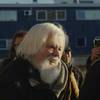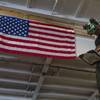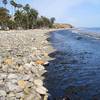Two Foss Maritime conventional twin-screw harbor service tugs have been repowered and converted into azimuthal stern drive (ASD) vessels. The projects, involving 96 ft. sister ships, increase horsepower by 46 percent, and bollard pull by 63 percent. Vessel manueverability and pilot visibility are also dramatically enhanced.
Work on Seattle-based Daniel Foss is complete with the Los Angeles-based Peter Foss scheduled to return to service in March 1999. Foss uses both vessels to provide harbor services, including ship assist, tanker escort and barge transportation.
The vessels were originally designed by The Glosten Associates, Seattle, and built in the late 1970s at Main Iron Works, Houma, La. Conversion and repowering are being done at Marine Industries Northwest, Inc., (MINI) Seattle.
With the repower, two electronically controlled CAT 3512B engines, each rated 1,650 bhp (1,230 bkW) at 1,600 rpm, drive two Ulstein azimuthal stern drives with skewed propellers inside Nautican high performance nozzles. The new propulsion system produces more than 90,000 lbs. of bollard pull and provides high thrust over a complete 360-degree range.
To improve pilots' sight lines in all directions, the traditional pilothouse forward was removed and a new high-visibility pilothouse was placed amidships.
The ASD conversions were conceived by Foss' in-house design team, with engineering support provided by Glosten and MINI. According to Ulsteain President Ewan Moir, these are some of the first Ulstein installations involving former conventional tugs.
"These tugs were good candidates for conversion because they are very robust, well-built, have the correct proportions and have many years of productive service life remaining," says Don Hogue, Foss engineering manager. "Also, the existing deckhouse, stack geometry lent itself well to the installation of the new high-visibility pilothouse."
Hull modifications included changes to the keel profile to provide increased lateral hull resistance and additional ballast for improved stability. Aft hull lines were re-contoured to accept the stern drive units, add buoyancy and improve performance while going astern.
Sponsored Content
Lower carbon intensity fuels to support your operations

Subscribe for
Maritime Reporter E-News
Maritime Reporter E-News is the maritime industry's largest circulation and most authoritative ENews Service, delivered to your Email five times per week










